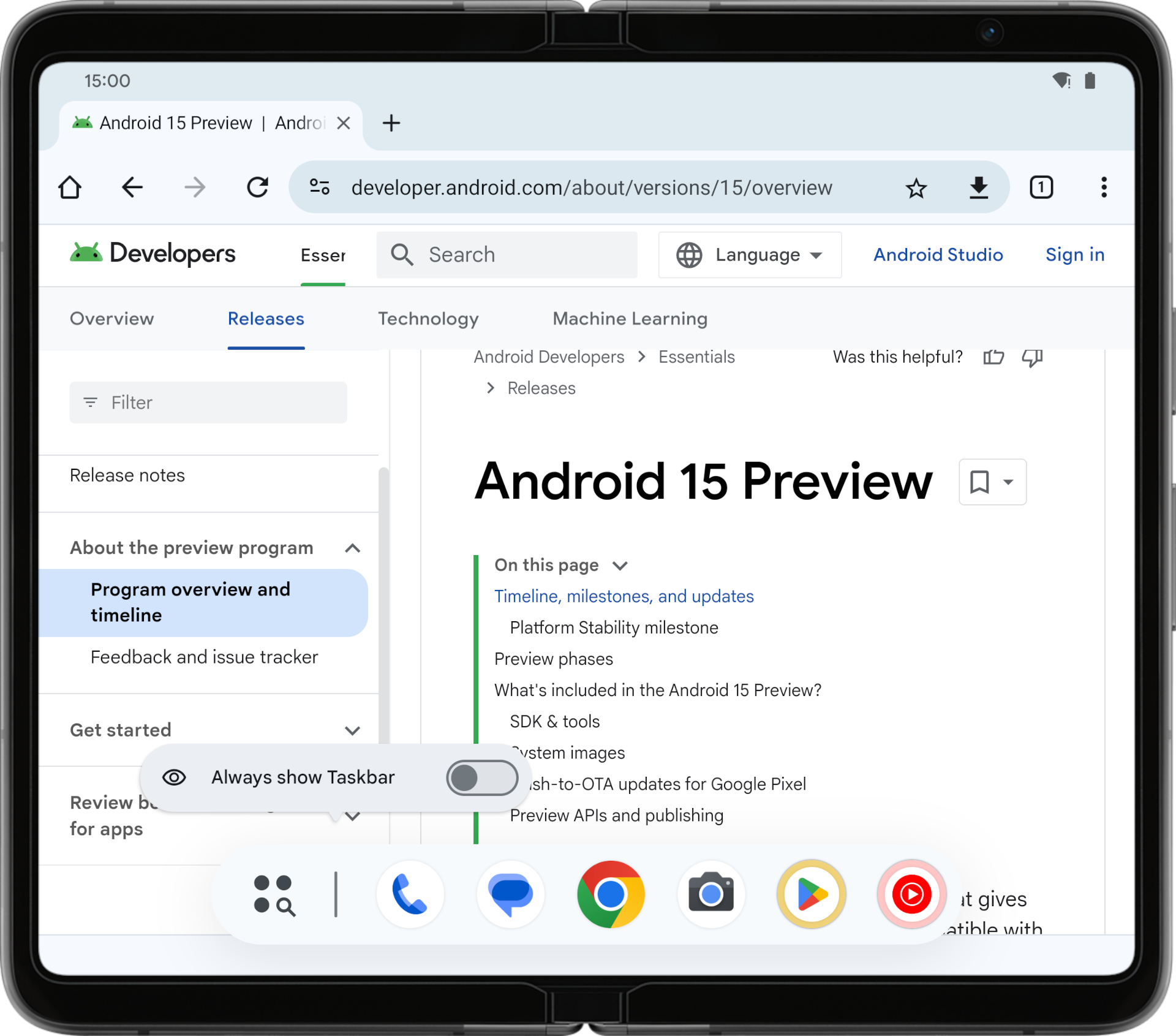Affiliate links on Android Authority may earn us a commission. Learn more.
Android 15 DP2 lets you bring back the old taskbar on your Pixel Tablet or Pixel Fold
Published onMarch 22, 2024
- In the latest Android 15 preview, it’s now possible to switch back to a persistent taskbar.
- The taskbar feature debuted with Android 12L as a persistent tool that took up the screen’s entire width.
- With the launch of the Pixel Tablet and Pixel Fold, Google revamped the taskbar to take up less of the screen and be transient, but Android 15 DP2 now gives you a choice between styles.
Back in early 2022, Google announced Android 12L, the first version of Android dedicated to large-screen devices (like tablets) since 2012’s Android 3.0 Honeycomb. One of the key features of Android 12L was the taskbar, a dock that resides at the bottom of the screen and provides quick access to your apps. With the taskbar, users can quickly launch a new app from any screen or even enter a split-screen view. The taskbar is a staple feature of desktop operating systems, so its inclusion in Android 12L was a no-brainer given Google’s renewed focus on productivity.
The original version of Android’s taskbar, however, stretched the entire width of the screen and was persistent, meaning it was always there. While users could temporarily stash the original taskbar by long-pressing on an empty area, its design overall was limiting. The fact that it was always visible wasn’t that useful for anyone but hardcore multitaskers. Plus, it took up a lot of screen real estate, hindering productivity on smaller devices, like book-style foldable phones.
That’s why when Google launched Android 13 QPR2 last year, it revamped how the taskbar looks and behaves. Instead of a persistent bar that stretches the width of the screen, the new taskbar was enclosed by a small, pill-shaped box at the bottom that would only appear for a few seconds after the user swiped up on the gesture bar. This new taskbar experience debuted on last year’s Pixel Tablet and Pixel Fold and trickled down to devices from other OEMs with the Android 14 release.
Although the new “transient” taskbar is more suitable for the average user, it’s less useful for people who like to multitask. Every time you want to open a new app, you must swipe up on the taskbar to reveal it before you can access your app list. Google could solve this problem by adding a way to pin the taskbar to the bottom so that it doesn’t disappear after a few seconds, and that’s exactly what it’s added in the latest developer preview for Android 15.
Welcome back the persistent taskbar to Android 15
Starting in Android 15 DP2, Google gives users the option of whether they want to use the old, persistent taskbar or the new, transient taskbar. When you swipe up on the taskbar and long press on an empty spot, a pop-up will appear with a toggle to “always show taskbar.” Selecting this option will revert the taskbar back to the old persistent style, while deselecting it will re-enable the newer, transient style. This toggle brings the best of both taskbars to users: Simply enable it if you need to do any work that involves switching between apps or multitasking and disable it when you don’t.

We’re hoping that with the addition of this option, other manufacturers of tablets and book-style foldables follow suit. Currently, some OEMs like OnePlus only offer the old, persistent taskbar style. However, if it were to adopt this feature, then it could offer the old and new styles to users. Which taskbar style do you prefer?